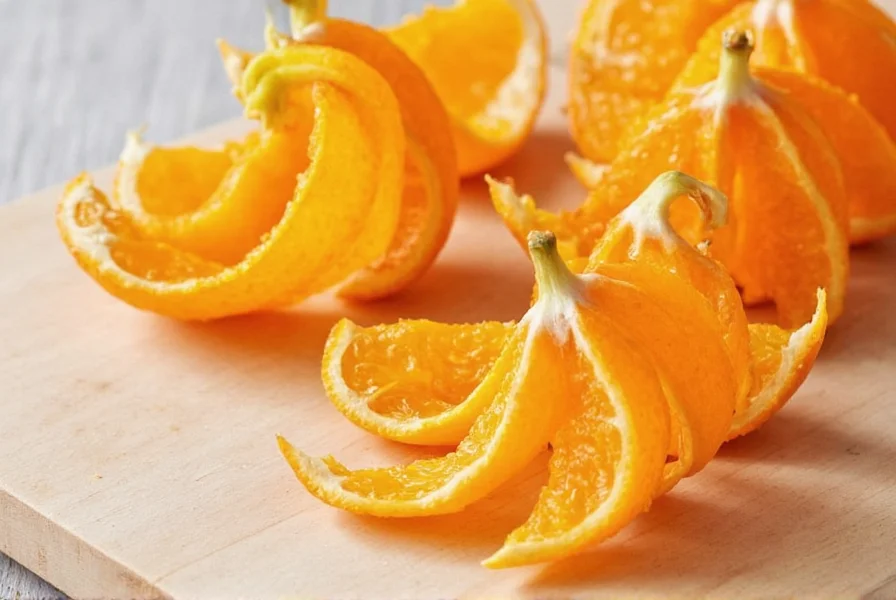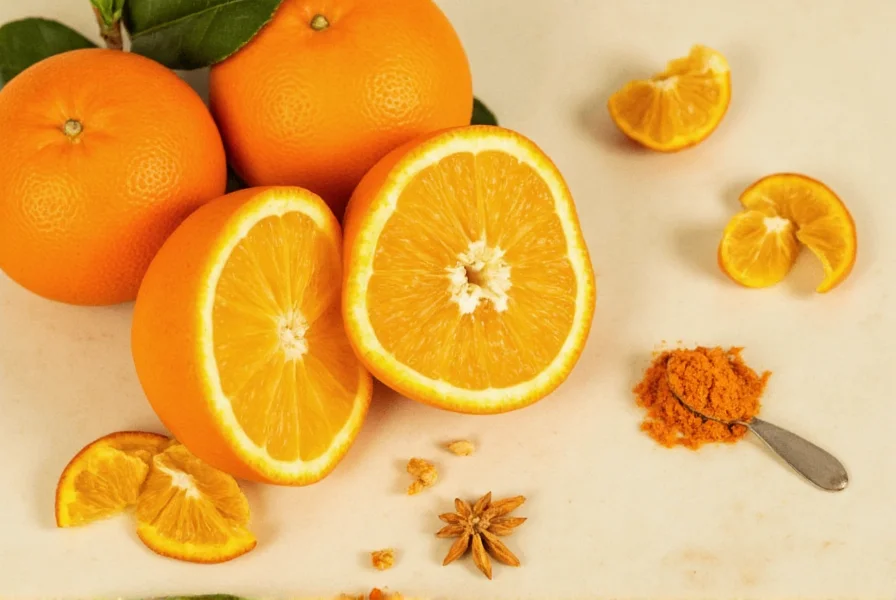Welcome, spice lovers! Whether you're a seasoned chef or just someone who enjoys playing with flavors in the kitchen, this post is for you. Today, we're diving into one of nature's most aromatic treasures: orange peel zest. It may look like a simple byproduct of juicing an orange, but trust me—it's a powerhouse of flavor and versatility.
Table of Contents
- What Exactly Is Orange Peel Zest?
- Why You Should Care About Zest
- Top 5 Ways to Use Orange Zest in Cooking & Baking
- Zesting Tools: A Buyer's Guide
- How to Store Zest Like a Pro
- Fun & Unexpected Uses of Orange Zest Beyond the Kitchen
- Frequently Asked Questions About Orange Peel Zest
- Final Thoughts
What Exactly Is Orange Peel Zest?
You might be wondering, what separates zest from just plain old orange rind? Well, here's the lowdown:
- Zest is the thin, colored part of the citrus peel—also known as the zest or flavedo.
- The white, spongy layer beneath it is called the pith, and that's not what we want!
- Zest contains essential oils that are packed with intense flavor and aroma.

In short, when you zest an orange, you're extracting pure concentrated flavor. And unlike juice, which brings moisture, zest delivers dry, aromatic intensity without diluting your dish.
Why You Should Care About Zest
Let's get one thing straight: zest isn't just for garnishing anymore. Here's why every home cook should keep a zester handy:
- Natural Flavor Boost: No need for artificial flavorings when a bit of zest can elevate desserts, marinades, and sauces.
- Versatile: Works in both sweet and savory dishes.
- Healthy: Zero sugar, zero calories, full of antioxidants and vitamin C.
- Chef-approved shortcut: Even Michelin-starred chefs swear by it for quick depth of flavor.

Top 5 Ways to Use Orange Zest in Cooking & Baking
Ready to take your dishes from "meh" to "mind-blowing"? Try these top tips using orange peel zest:
- Bake it into desserts: Lemon poppy seed muffins, chocolate cakes, or even brownies love a bit of citrus zing.
- Add to marinades: Combine zest with olive oil, garlic, and herbs for a vibrant marinade for chicken or fish.
- Mix into cocktails: Rim glasses with zest-infused sugar or muddle a bit into mojitos.
- Stir into salad dressings: Brighten up vinaigrettes with a dash of zest—it pairs beautifully with arugula or citrus salads.
- Enhance rice or couscous: Stir a pinch into pilafs or quinoa for a fragrant twist.

Zesting Tools: A Buyer's Guide
Not all zesters are created equal. Let's break down the top tools for extracting orange peel zest and what they're best for:
| Type | Pros | Cons | Best For |
|---|---|---|---|
| Microplane Zester | Super fine, easy to use, creates light zest clouds | Blades can dull over time | Baking, desserts, cocktail rimming |
| Box Grater | Multi-purpose, sturdy | Rinds can tear if too soft; harder to control zest size | Larger batches, cooking |
| Rotary Zester | Ergonomic, fast results | More expensive, less portable | Professional kitchens, frequent users |
| Citrus Reamer with Zester | Doubles as a juicer | Less precision, sometimes awkward to hold | Small kitchens, occasional use |

Our Top Picks
- Best Overall: Microplane Classic Zester – razor-sharp and super affordable.
- Best for Professionals: OXO Good Grips Rotary Zester – ergonomic and powerful.
- Best Multi-Tasker: Prepworks Citrus Squeezer + Zester – perfect for small spaces.

How to Store Zest Like a Pro
You don't always want to zest an entire orange at once—and that's okay! Here's how to store zest for later use:
- Refrigerator: Keep fresh zest in an airtight container for up to 3 days.
- Freeze it: Spread zest on parchment paper and freeze. Once frozen, transfer to a freezer bag for up to 6 months.
- Dry it: Lay zest on a baking sheet and place in a warm oven until fully dried (about 10–15 mins). Store in a sealed jar for up to a year.

Fun & Unexpected Uses of Orange Zest Beyond the Kitchen
Believe it or not, orange zest has life beyond your cutting board. Here are some quirky, creative ways to put it to work:
- Make DIY candles: Infuse melted soy wax with dried zest for a fresh citrus scent.
- Homemade cleaning spray: Boil zest in vinegar water for a natural degreaser.
- Beauty boost: Mix zest with honey and yogurt for a glowing citrus face mask.
- Potpourri: Dry zest with cinnamon sticks and cloves for festive holiday decor.
- Garbage disposal freshener: Toss in a handful of zest cubes to eliminate odors.

Frequently Asked Questions About Orange Peel Zest
What's the difference between orange zest and orange peel?
While often used interchangeably, there's a subtle difference. The peel refers to the entire outer layer of the orange, including both the colorful zest (flavedo) and the bitter white pith underneath. Zest specifically refers to just the thin, colored outer layer that contains the flavorful essential oils, excluding the bitter pith.
How much zest does one orange typically yield?
On average, one medium orange yields about 1-2 tablespoons of zest. The exact amount depends on the size of the orange and the tool used for zesting. Larger navel oranges typically provide more zest than smaller varieties like clementines.
Can I use dried orange zest instead of fresh?
Yes, but with some considerations. Dried zest has a more concentrated flavor but lacks the bright, fresh aroma of freshly grated zest. When substituting, use about half the amount of dried zest compared to fresh. For best results, rehydrate dried zest by mixing with a small amount of liquid from your recipe for 10-15 minutes before using.
Is orange zest safe to eat?
Yes, orange zest is safe to eat and highly nutritious when properly prepared. However, it's crucial to use organic oranges or thoroughly wash conventional oranges to remove any pesticides or wax. Always remove only the colored part (zest) and avoid the bitter white pith underneath.
What's the best way to remove wax from store-bought oranges before zesting?
To remove wax from conventional oranges: 1) Wash the orange in warm water with a small amount of dish soap, 2) Use a soft brush to gently scrub the surface, 3) Rinse thoroughly under hot water, 4) For extra assurance, soak in a solution of 1 part vinegar to 3 parts water for 5-10 minutes, then rinse again. Always dry completely before zesting.
Can I substitute lemon zest for orange zest in recipes?
Yes, lemon zest can generally be substituted for orange zest in a 1:1 ratio, but be aware that the flavor profile will change significantly. Lemon zest is more tart and acidic, while orange zest is sweeter and more floral. For best results, consider the dish you're making - lemon works well in lighter dishes, while orange complements richer flavors like chocolate.
Final Thoughts
Orange peel zest might seem like a tiny ingredient, but its impact on flavor, aroma, and even lifestyle is huge. From enhancing your culinary creations to spicing up your home and beauty routine, zest is the ultimate multitasker.
So next time you reach for that orange, don't toss the peel away—grab your zester instead and unlock a whole new world of flavor and function. Happy zesting!











 浙公网安备
33010002000092号
浙公网安备
33010002000092号 浙B2-20120091-4
浙B2-20120091-4